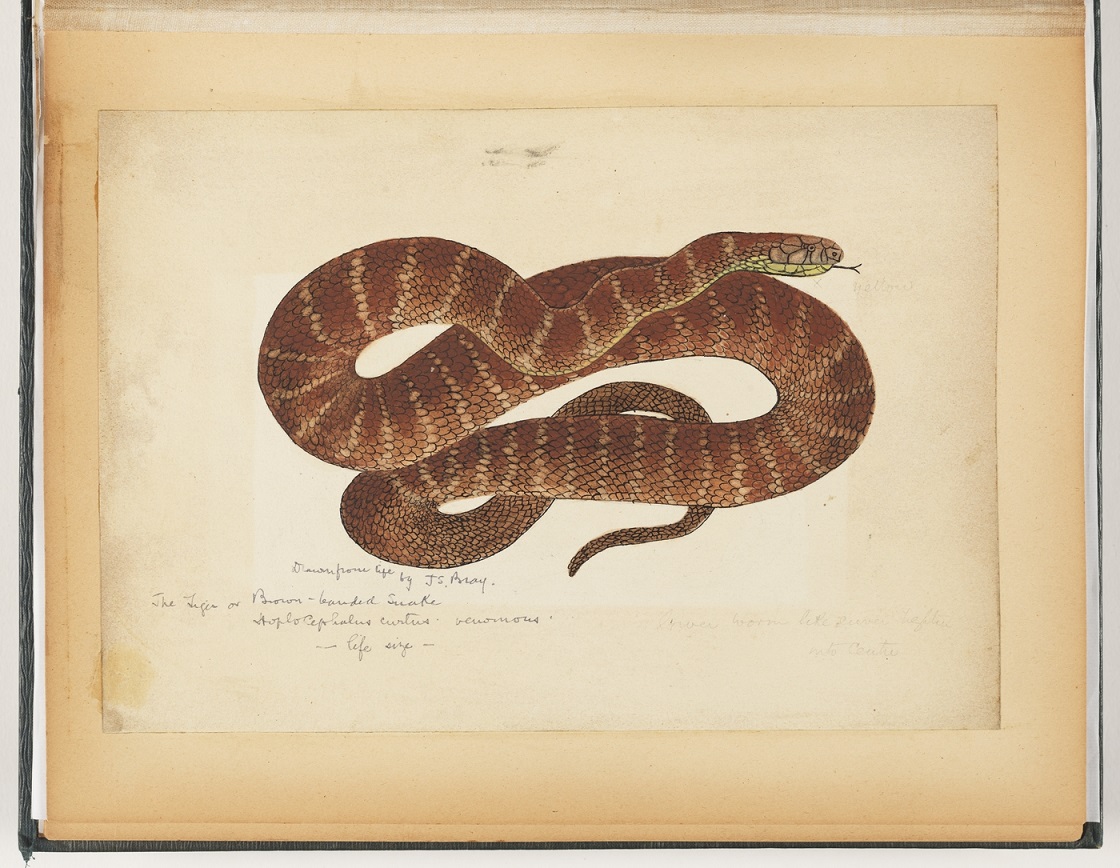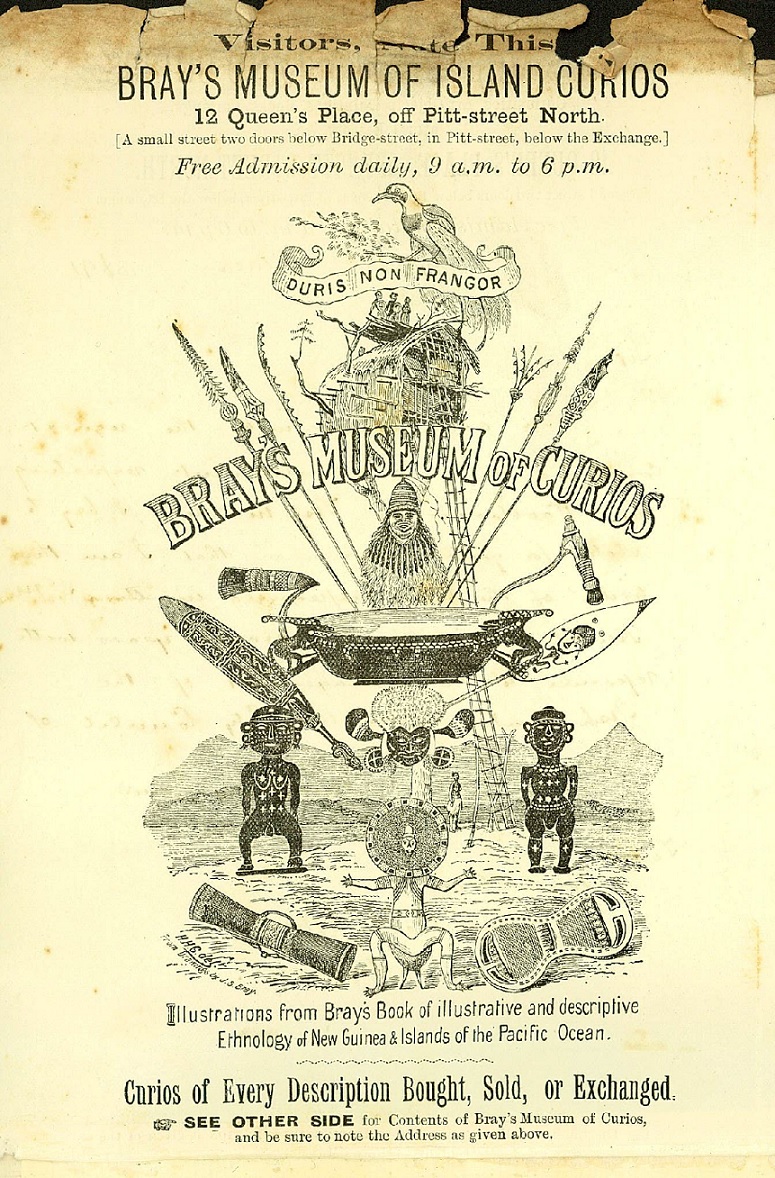The Dictionary of Sydney was archived in 2021.
The Dictionary of Sydney was archived in 2021.
James Bray and his Museum of Curios
 Drawn from life by JS Bray, the tiger or brown-banded snake, Hoplocephalus curtus - venomous by JS Bray, courtesy Mitchell Library, State Library of NSW (c004220010 / PXA 192)
Drawn from life by JS Bray, the tiger or brown-banded snake, Hoplocephalus curtus - venomous by JS Bray, courtesy Mitchell Library, State Library of NSW (c004220010 / PXA 192)
 This drawing in Bray's notebooks of condemned convicts leg irons in Brays Museum Sydney 10 August 1891 was accompanied by this information 'The Hon G Thornton who viewed the original specimen of these heavy convict leg irons (only used on convicts when condemned to death in the early times of New South Wales) assured me that he had frequently seen several of the men with such irons on them' Courtesy Mitchell Library, State Library of NSW (PXA 188)
This drawing in Bray's notebooks of condemned convicts leg irons in Brays Museum Sydney 10 August 1891 was accompanied by this information 'The Hon G Thornton who viewed the original specimen of these heavy convict leg irons (only used on convicts when condemned to death in the early times of New South Wales) assured me that he had frequently seen several of the men with such irons on them' Courtesy Mitchell Library, State Library of NSW (PXA 188)
 Flyer for Bray's Museum of Island Curios c1891 Courtesy City of Sydney Archives (26/248/408)
Flyer for Bray's Museum of Island Curios c1891 Courtesy City of Sydney Archives (26/248/408)
 The Dictionary of Sydney is proud to support History Week 2017 as a Cultural Partner of the History Council of NSW
The Dictionary of Sydney is proud to support History Week 2017 as a Cultural Partner of the History Council of NSW
 Peter Hobbins is an historian of science, technology and medicine at the University of Sydney. Much of his work has explored the meanings and boundaries of 'scientific medicine', in both nineteenth- and twentieth-century Australia. He is the author of a book on snakes and snakebite in colonial Australia, and co-author with Ursula K Frederick and Anne Clarke of 'Stories from the Sandstone: Quarantine inscriptions from Australia's immigrant past', which this week won the 2017 NSW Community and Regional History Prize at the Premier's History Awards. In 2016 Peter was the Merewether Fellow at the State Library of New South Wales, researching Sydney-based amateur naturalist, James Samuel Bray. He has appeared on 2SER for the DIctionary in a voluntary capacity.
Listen to the podcast with Peter & Nic here, and tune in to 2SER Breakfast with Nic Healey on 107.3 every Wednesday morning at 8:15-8:20am to hear more from the Dictionary of Sydney.
The Dictionary of Sydney needs your help. Make a donation to the Dictionary of Sydney and claim a tax deduction!
Peter Hobbins is an historian of science, technology and medicine at the University of Sydney. Much of his work has explored the meanings and boundaries of 'scientific medicine', in both nineteenth- and twentieth-century Australia. He is the author of a book on snakes and snakebite in colonial Australia, and co-author with Ursula K Frederick and Anne Clarke of 'Stories from the Sandstone: Quarantine inscriptions from Australia's immigrant past', which this week won the 2017 NSW Community and Regional History Prize at the Premier's History Awards. In 2016 Peter was the Merewether Fellow at the State Library of New South Wales, researching Sydney-based amateur naturalist, James Samuel Bray. He has appeared on 2SER for the DIctionary in a voluntary capacity.
Listen to the podcast with Peter & Nic here, and tune in to 2SER Breakfast with Nic Healey on 107.3 every Wednesday morning at 8:15-8:20am to hear more from the Dictionary of Sydney.
The Dictionary of Sydney needs your help. Make a donation to the Dictionary of Sydney and claim a tax deduction!Categories
Blog
2ser
James Bray
museums of curios
naturalists
Nic Healey
Peter Hobbins
snakes
sydney history
Woolloomooloo

